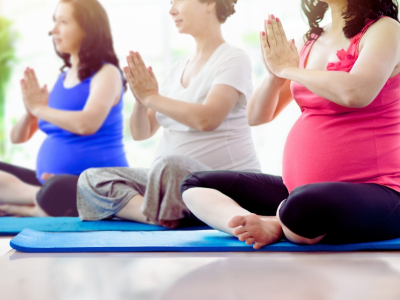Looking for the best pregnancy exercise tips to stay active and healthy during your pregnancy? You’re in the right place! Regular exercise during pregnancy not only helps you maintain a healthy weight but also improves your mood, boosts energy levels, and prepares your body for labor and delivery. Whether you’re in your first trimester or nearing your due date, incorporating safe and effective exercises can make a big difference in your overall well-being.
In this article, we’ll share essential pregnancy exercise tips to help you stay fit, reduce discomfort, and ensure a safe and healthy pregnancy. Keep reading to discover expert advice, practical workout ideas, and safety precautions to make exercising during pregnancy simple and effective!
Don’t forget to bookmark this page for the ultimate guide to pregnancy exercise tips and share it with other moms-to-be!
Why do many pregnant women seek pregnancy exercise tips?
Studies by the American College of Obstetricians and Gynecologists (ACOG) highlight that exercise during pregnancy benefits both mothers and babies. Here’s why staying active matters:
- Boosts energy levels: Reduces fatigue and helps maintain stamina.
- Improves circulation: Reduces swelling and prevents varicose veins.
- Strengthens muscles: Prepares your body for labor and delivery.
- Eases pregnancy discomforts: Relieves back pain, improves posture, and reduces stress.
However, it’s important to know which exercises are appropriate for each trimester to ensure the health of you and your baby.
7 Expert-Approved Pregnancy Exercise Tips
After highlighting the importance of exercise during pregnancy, here are some tips to ensure it’s safe. But remember again, not all exercises are suitable for every expectant mom, as each pregnancy is unique. These pregnancy exercise tips from gynecologists will help you safely stay fit and comfortable throughout your pregnancy journey. But, it’s crucial to consult your doctor before starting or modifying any exercise routine during pregnancy. Your gynecologist can provide personalized recommendations based on your health and pregnancy progress.
Know more about
can you horseback ride while pregnant
Start Slowly and Stay Consistent
This is one of the most important tips for anyone wanting to start exercising. If you weren’t exercising regularly before pregnancy, start slowly with light activities like walking or prenatal yoga. Gradually increase the duration and intensity of your workouts as your body adapts. Consistency is more important than intensity during pregnancy.
Focus on Low-Impact Exercises
Gynecologists refer to low-impact exercises as ideal for pregnancy, as they reduce strain on joints and minimize the risk of injury. Recommended activities include:
- Walking: Improves cardiovascular health and boosts energy.
- Swimming: Relieves joint pressure and provides a full-body workout.
- Stationary Cycling: Keeps you active while maintaining balance.
Always avoid high-impact activities like running or contact sports unless approved by your gynecologist.
Prioritize Pelvic Floor Exercises
Pelvic floor exercises (Kegels) strengthen the muscles that support your uterus, bladder, and bowels. These exercises can reduce the risk of urinary incontinence and help during labor.
Modify Exercises for Each Trimester
Your exercise routine should evolve as your pregnancy progresses. Here are trimester-specific tips:
- First Trimester: Focus on light activities like walking, stretching, and yoga to build a strong foundation.
- Second Trimester: Incorporate strength training with light weights or resistance bands to maintain muscle tone.
- Third Trimester: Concentrate on gentle exercises like squats and breathing techniques to prepare for labor.
Consult your doctor before introducing new exercises at any stage of pregnancy, and continue reading this article to learn more about pregnancy exercise tips for each trimester.
Stay Hydrated and Avoid Overheating
Pregnant women are more susceptible to dehydration and overheating, which can harm both mom and baby. Drink plenty of water before, during, and after exercise. Wear lightweight, breathable clothing and avoid working out in hot or humid environments.
Listen to Your Body
Your body gives you signals when something isn’t right. If you feel dizzy, short of breath, or experience pain, stop exercising immediately. Common signs to watch for include:
- Unusual fatigue
- Vaginal bleeding or fluid leakage
- Chest pain or rapid heartbeat
Always inform your gynecologist if you notice any unusual symptoms during or after exercise.
Incorporate Exercises for Easy Delivery
Certain exercises can prepare your body for labor and delivery, making the process smoother. Recommended exercises include:
- Squats: Opens the pelvis and strengthens leg muscles.
- Pelvic Tilts: Relieves back pain and strengthens abdominal muscles.
- Breathing Exercises: Teaches relaxation techniques for labor.
Work with your gynecologist to ensure these exercises align with your specific pregnancy needs.
That’s all about pregnancy exercise tips which many experts advise. If you want to learn more about pregnancy exercise routines, keep reading. While these tips are general recommendations, your gynecologist knows your unique health status and pregnancy conditions. Your safety and your baby’s well-being are the top priorities, so never hesitate to ask your doctor for guidance.
Which Month to Start Exercise During Pregnancy
Many moms-to-be wonder, “When is the right time to start exercising during pregnancy?” The answer largely depends on your fitness level and your gynecologist’s recommendations. If you were active before pregnancy, you can usually continue your routine with adjustments from the first month. If you’re new to exercise, begin with low-impact activities like walking or prenatal yoga starting in the first trimester. Consistency is more important than intensity. Starting early helps your body adapt and build stamina for the later stages of pregnancy.
Know more about
sore coccyx after pregnancy
how to relieve neck pain while pregnant
Pregnancy Exercise Routine
Creating a pregnancy exercise routine tailored to each trimester ensures that your workouts are safe and effective. Below, we break down trimester-specific routines and tips.
Safe Exercise During First Trimester
During the first trimester, your body undergoes significant changes as it adjusts to pregnancy. Light, low-impact activities are ideal during this time.
Recommended pregnancy exercises – first trimester
- Walking: Maintains cardiovascular health without strain.
- Prenatal Yoga: Reduces stress and promotes relaxation.
- Kegels: Strengthens pelvic floor muscles.
Pregnancy Exercise Tips First Trimester
- Avoid overheating by exercising in a cool environment.
- Limit high-impact activities to reduce the risk of injury.
- Focus on short, gentle workouts to ease into a routine.
These pregnancy exercise tips for the first trimester set the stage for a healthy and active pregnancy.
Safe Exercise During Second Trimester
The second trimester is often considered the easiest time for physical activity. With nausea subsiding and energy levels improving, you can expand your routine.
Recommended exercises during the second trimester
- Swimming: A full-body workout that’s gentle on joints.
- Modified Strength Training: Use light weights to maintain muscle tone.
- Pilates: Improves core strength and balance.
Pregnancy Exercise Tips Second Trimester
- Avoid lying flat on your back during exercises.
- Use supportive footwear to reduce strain on your joints.
- Incorporate movements that improve posture to support your growing belly.
These pregnancy exercise tips for the second trimester help you stay strong and energized.
Safe Exercise During Third Trimester
As you near your due date, focus on gentle exercises that reduce discomfort and prepare your body for labor.
Recommended pregnancy exercises third trimester
- Stretching: Relieves tension in your back, hips, and legs.
- Kegels: Prepares pelvic muscles for childbirth.
- Squats: Helps open the pelvic area.
Pregnancy Exercise Tips Third Trimester
- Avoid any exercise that causes pain or shortness of breath.
- Practice breathing techniques specific to labor.
- Prioritize rest when needed and modify exercises for comfort.
These pregnancy exercise tips for the third trimester are designed to support you during the final weeks of pregnancy. A balanced pregnancy exercise routine can help you feel better and prepare for childbirth. Always prioritize your comfort and safety, and enjoy this special time!
Know more about
Tips for Managing Pregnancy Insomnia
how to manage pregnancy discomfort
Exercises for Easy Delivery During Pregnancy
Preparing for labor involves not only mental readiness but also physical strength. Incorporate these exercises into your routine to ease delivery:
- Pelvic Tilts: Strengthen abdominal and lower back muscles.
- Squats: Open the pelvic area and enhance flexibility.
- Perineal Massage Preparation: Improves the flexibility of pelvic tissues.
These exercises not only prepare your body but also reduce the risk of complications during delivery. Remember, consistency and proper form are key.
Exercise is a powerful tool for a healthier pregnancy and smoother labor. Stay active, consult your gynecologist, and enjoy this special journey! Whether you’re in your first trimester and just starting out or looking for exercises for easy delivery in your third trimester, this article on pregnancy exercise tips offers practical and safe advice tailored to each stage.
Remember, every pregnancy is unique. While these pregnancy exercise tips are based on real experiences, always consult your gynecologist to ensure your fitness routine aligns with your specific needs. Stay active, stay informed, and let Light Pink Care support you with all the resources you need for a healthy and happy pregnancy!
Source:
ACOG Guidelines on Physical Activity and Exercise During Pregnancy
CDC – Physical Activity During Pregnancy
What type of exercise is best for pregnancy?
Low-impact activities like walking, swimming, and prenatal yoga are ideal for maintaining fitness during pregnancy.
What exercises shouldn’t you do when pregnant?
Avoid high-risk activities like contact sports, heavy lifting, and exercises that involve lying flat on your back in later pregnancy.
How many hours a day should a pregnant woman exercise?
Aim for at least 30 minutes of moderate exercise most days of the week, but listen to your body.
Can I do squats while pregnant?
Yes, squats are generally safe and can strengthen the legs and core, but ensure proper form and listen to your body.
Can I jump while pregnant?
It’s best to avoid jumping and high-impact exercises, especially in later pregnancy, to reduce the risk of injury.

